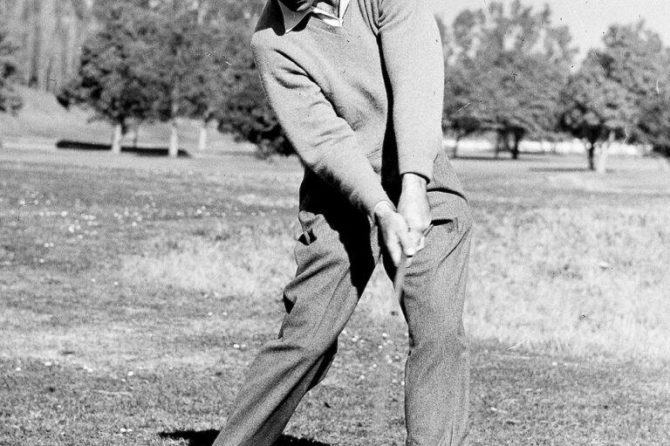Introduction
The socioeconomic impact of golf courses within communities transcends mere recreational value, encapsulating a multifaceted contribution to local economies and social frameworks. As meaningful economic engines, golf courses not only stimulate financial activity—evidenced by the generation of billions in annual revenue—but also foster community engagement and progress through charitable activities and the promotion of beneficial social interactions. Research highlights that public golf courses,in particular,play a pivotal role in economic growth,creating employment opportunities and facilitating mentorship and collaboration within the community (Fabre Agency,2023). In addition, comprehensive economic impact reports underscore golf’s substantial influence on related industries, including retail and tourism, while also assessing the broader economic footprints of golf facilities (National Golf Foundation, 2023).
Though, the evaluation of golf courses’ impacts prompts a nuanced discourse on their role as vehicles for socioeconomic mobility. despite their potential benefits, stakeholder perspectives reveal divergent views regarding the value and sustainability of golf-based tourism development and its implications for local economies (IJSDP, 2023). This article seeks to systematically evaluate the socioeconomic impacts of golf courses in communities, weaving together quantitative analyses and qualitative narratives to provide a holistic understanding of their contributions and challenges. By examining the intersection of golf’s economic, social, and environmental dimensions, we aim to articulate a comprehensive overview of how golf courses shape community dynamics in a continually evolving economic landscape.
Evaluating Economic Contributions of Golf Courses to Local Communities
The economic contributions of golf courses extend well beyond their immediate operations, significantly influencing local economies. According to the 2023 Golf Economic Impact Report, golf generates nearly $102 billion in direct economic impact within the United states, a notable increase from previous years.This impact not only encapsulates the revenues generated through greens fees and memberships but also highlights the contributions made through ancillary services such as dining, retail, and event hosting. A well-managed golf course can serve as a critical nexus for economic activity, attracting both resident participation and tourism.
Moreover, golf courses play a vital role in local job creation. The industry supports over 1.83 million jobs, encompassing a diverse range of positions—from course maintenance staff to hospitality and retail employees. These employment opportunities are notably significant in areas wiht fewer job options, contributing to the socioeconomic stability of communities. Additionally, golf facilities frequently enough engage in local partnerships, enhancing community connections and supporting area schools, charities, and local events, thereby amplifying their societal value.
Moreover, the environmental stewardship practices observed at many golf courses can lead to enhanced community assets. Many facilities are increasingly focused on sustainability initiatives and habitat conservation,which can improve local property values and contribute to a sense of community pride. In areas where golf courses are integrated into the landscape thoughtfully, they can provide recreational opportunities and green space that benefit residents and wildlife alike. These contributions underscore the multifaceted role of golf courses as economic engines that foster both fiscal growth and community well-being.
Assessing Environmental and Ecological effects of Golf Course Development
The development of golf courses can significantly influence the surrounding environment and ecosystems. A comprehensive analysis is essential to assess the ecological implications of such projects.Golf courses,when strategically located and meticulously designed,can enhance biodiversity and restore natural habitats. They can serve as vital refuges for various species of flora and fauna, thereby integrating ecological health into recreational areas. With proper planning, golf courses can mitigate habitat loss and support conservation initiatives.
Furthermore, golf courses can play a pivotal role in environmental stewardship. By implementing enduring practices, they can contribute positively to local ecosystems. Key sustainable practices include:
- Utilizing native vegetation to minimize water usage and promote local wildlife.
- Implementing integrated pest management strategies to reduce chemical inputs.
- Establishing buffer zones around water bodies to enhance water quality.
Through these measures, golf courses can effectively reduce their carbon footprint, acting as carbon sinks that help combat climate change. This balance between recreational use and ecological preservation promotes a harmonious coexistence with nature.
Moreover, the strategic design and management of golf courses can yield essential environmental services. These include urban cooling,enhanced water management,and improved air quality. The following table outlines some of the potential ecological benefits that golf courses provide:
| Ecological Benefit | description |
|---|---|
| Urban Cooling | Golf courses can lower local temperatures through vegetation, reducing heat island effects. |
| Water Management | Effective design can facilitate natural water filtration and enhance moisture retention in the landscape. |
| Pollinator Habitats | Native plants on golf courses support pollinator populations, which are crucial for biodiversity. |
Analyzing Social Dynamics and Community Engagement Driven by Golf Facilities
The role of golf facilities in fostering social dynamics and community engagement cannot be overstated. These venues serve as more than just spaces for sporting activity; they are vibrant community centers that facilitate interaction among diverse groups of individuals. Golf courses often become the hubs for local events and gatherings, where players of all skill levels can engage in a social setting. Key factors influencing this dynamic include:
- Inclusivity: Golf facilities that offer programs aimed at beginners and promote participation from various demographics encourage broader community engagement.
- social Events: Tournaments and social gatherings sponsored by golf courses create opportunities for networking,friendships,and community spirit among players.
- Collaboration with Local Businesses: Partnerships with local vendors during events can help bolster the community’s economy while enhancing the overall experience for attendees.
Moreover, the creation of leagues and clubs centered around golf promotes sustained engagement and strengthens social ties. These organized groups not only provide a structure for play but also offer a platform for members to share experiences and camaraderie.The impact of such initiatives is profound, contributing to the development of shared values and a sense of belonging among participants. Noteworthy benefits include:
- Enhanced Player Loyalty: Regular participation in community golf activities fosters loyalty to the facility and the sport.
- Mutual Support: Members frequently enough support each othre in local philanthropic initiatives,reinforcing community bonds.
- Healthy Lifestyle Promotion: Golf’s emphasis on physical activity encourages healthier lifestyle choices among community members.
The socioeconomic impact of golf facilities on communities can further be quantified through key metrics that highlight their contributions to local economies and social structures.Consider the following table,which outlines some of the measurable effects of golf facilities:
| Impact Area | Description | Example Metric |
|---|---|---|
| Economic contributions | Revenue generated from memberships and events | Annual income from green fees and events |
| Job Creation | Employment opportunities for local residents | Number of full-time roles created |
| Community Involvement | Participation in local charitable events | Funds raised for community causes |
in sum,golf facilities excel as catalysts for social engagement,while simultaneously providing considerable economic benefits. Their role in enhancing community life is evidenced by the development of social networks, support systems, and a culture of inclusivity that resonates far beyond the fairways.
Investigating the influence of Golf Courses on Property Values and Local Economies
The relationship between golf courses and residential property values has been a topic of interest for urban planners, economists, and potential homeowners alike. Research indicates that properties adjacent to golf courses often realize a positive impact on their values, which can range significantly based on proximity and community factors. A study from Crompton (2001) suggests that homes near passive park areas, including golf courses, can experience valuation increases of approximately 20%. this trend is particularly notable in regions where golf courses serve not only as recreational spaces but also as aesthetic and environmental enhancements to the community.
However, the dynamics of this relationship are evolving. Between 2005 and 2017, the United States saw a decline in golf courses, resulting in an excess of 1,063 18-hole equivalents. As closures become more common—averaging around 200 per year—properties that once commanded premiums due to their proximity to these facilities face potential devaluation. The intertwined nature of these trends prompts critical scrutiny regarding community investment decisions and planning, particularly for regions that have constructed developments reliant on the sustained presence of local golf courses for property marketing and sales.
Beyond the immediate effects on property values, golf courses contribute to local economies in several crucial ways. They often serve as venues for community events, attract tourism, and create job opportunities, which collectively promote economic activity within their regions. The enhanced sense of community fostered by these spaces can thicken social ties and stimulate local businesses, especially those that cater to both residents and visitors engaging with golf-related activities. Understanding these multifaceted impacts requires continuous research and strategic community planning to harness the full potential of golf courses as economic drivers.
Formulating Strategic Recommendations for Sustainable Golf Course Management
In crafting strategic recommendations for sustainable golf course management, it is imperative to align operational practices with environmental stewardship, economic viability, and community engagement. First and foremost, golf courses should implement Best Management Practices (BMPs) that focus on integrating sustainable agronomic techniques. This can include the use of organic fertilizers, efficient irrigation systems, and native landscaping, which collectively enhance biodiversity while minimizing chemical inputs. Furthermore, regular assessments of land ecological value will serve to identify risks and opportunities for reducing the environmental footprint of golf course operations.
Engaging with local stakeholders and understanding community needs are essential components of a sustainable management approach. Golf courses can foster positive socioeconomic impacts by creating inclusive programs that promote accessibility and encourage local participation through initiatives such as community golf days or educational workshops on environmental conservation. By partnering with local organizations, courses can also support job creation in areas related to maintenance operations and hospitality, thereby reinforcing local economies while enhancing the public perception of the course.
Additionally, the incorporation of data analytics in decision-making processes can drive efficiency and transparency. Establishing metrics that measure the economic, social, and environmental outcomes will allow golf courses to adapt and refine their strategies effectively. A potential framework for evaluation may include:
| Evaluation Metric | Indicators |
|---|---|
| Environmental Impact | Water usage, biodiversity levels, chemical runoffs |
| Economic Contributions | Local job creation, revenue generation, tourism influx |
| Community Engagement | Participation rates, feedback surveys, partnership outcomes |
By employing these strategies, golf courses can ensure their operations are not only sustainable but also beneficial to the communities they inhabit, ultimately leading to a more harmonious relationship between recreational spaces and their surrounding environments.
In retrospect
the socio-economic impact of golf courses within local communities is multifaceted and far-reaching. As highlighted throughout this article, golf facilities serve not only as recreational hubs but also as significant contributors to economic development, job creation, and community engagement. Their capacity to stimulate local economies through tourism and related industries underscores the essential role they play in fostering financial growth and socio-economic mobility.Furthermore,the communal aspects of golf,particularly in urban settings,emphasize their potential as platforms for inclusivity and connection,bridging diverse populations and enhancing social cohesion.
As communities continue to navigate the challenges of economic disparities and social fragmentation, understanding and leveraging the impact of golf courses can be pivotal. Future research should aim to further elucidate the nuanced benefits and challenges presented by these facilities, promoting policies and practices that maximize their positive contributions while addressing any potential drawbacks.By doing so, we can ensure that golf courses remain vital assets that enhance the quality of life in our communities for generations to come.




